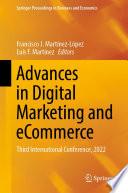
Introduction to Climate Change Management
Transitioning to a Low-Carbon Economy
This book provides climate students with the basic scientific background to climate change management. Students will learn about international and national approaches to climate change management defined in voluntary initiatives as well as in national law and international agreements. The book describes mitigation and adaptation measures, monitoring and reporting of greenhouse gas emissions, and strategies for achieving a low-carbon economy, including green finance. This book combines theory and practice, introducing students to the conceptual background but also taking a professional and technical approach with case studies and low carbon toolkits. Filled with didactic elements such as concept schemes, tables, charts, figures, examples, as well as questions and answers at the end of the chapters, this book aims to engage critical thinking and the discussion of important topics of our days. The low-carbon strategy is one of the answers to limiting the greenhouse effect on our planet. This strategy is to minimize the overall carbon consumption in the life cycle of the products we consume, from the extraction of raw materials to the end of their life. The future is being built today. This book will guide its readers along the path of imagining and realizing a low-carbon economy.”
- ISBN 13 : 3030879186
- ISBN 10 : 9783030879181
- Judul : Introduction to Climate Change Management
- Sub Judul : Transitioning to a Low-Carbon Economy
- Pengarang : John C. Shideler, Jean Hetzel, Jean Hetzel, Jean Hetzel, Jean Hetzel, Jean Hetzel, Jean Hetzel, Jean Hetzel, Jean Hetzel, Jean Hetzel, Jean Hetzel, Jean Hetzel, Jean Hetzel, Jean Hetzel, Jean Hetzel, Jean Hetzel, Jean Hetzel, Jean Hetzel, Jean Hetzel, Jean Hetzel, Jean Hetzel, Jean Hetzel, Jean Hetzel, Jean Hetzel, Jean Hetzel, Jean Hetzel, Jean Hetzel, Jean Hetzel, Jean Hetzel, Jean Hetzel, Jean Hetzel, Jean Hetzel, Jean Hetzel, Jean Hetzel, Jean Hetzel, Jean Hetzel, Jean Hetzel, Jean Hetzel, Jean Hetzel, Jean Hetzel, Jean Hetzel, Jean Hetzel, Jean Hetzel, Jean Hetzel, Jean Hetzel, Jean Hetzel, Jean Hetzel, Jean Hetzel, Jean Hetzel, Jean Hetzel, Jean Hetzel, Jean Hetzel, Jean Hetzel, Jean Hetzel, Jean Hetzel,
- Kategori : Science
- Penerbit : Springer Nature
- Bahasa : en
- Tahun : 2021
- Halaman : 263
- Google Book : https://play.google.com/store/books/details?id=_lFPEAAAQBAJ&source=gbs_api
-
Ketersediaan :
NGOs have frequently criticized the International Finance Corporation (IFC), a member of the World Bank Group, ... Within a country, “retail” commercial banks are variously organized as private companies or cooperative associations.









